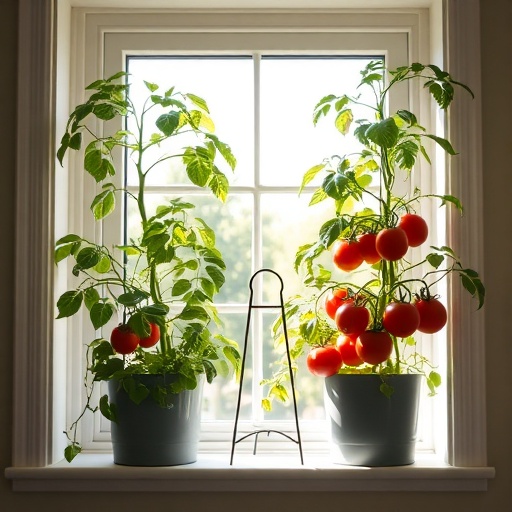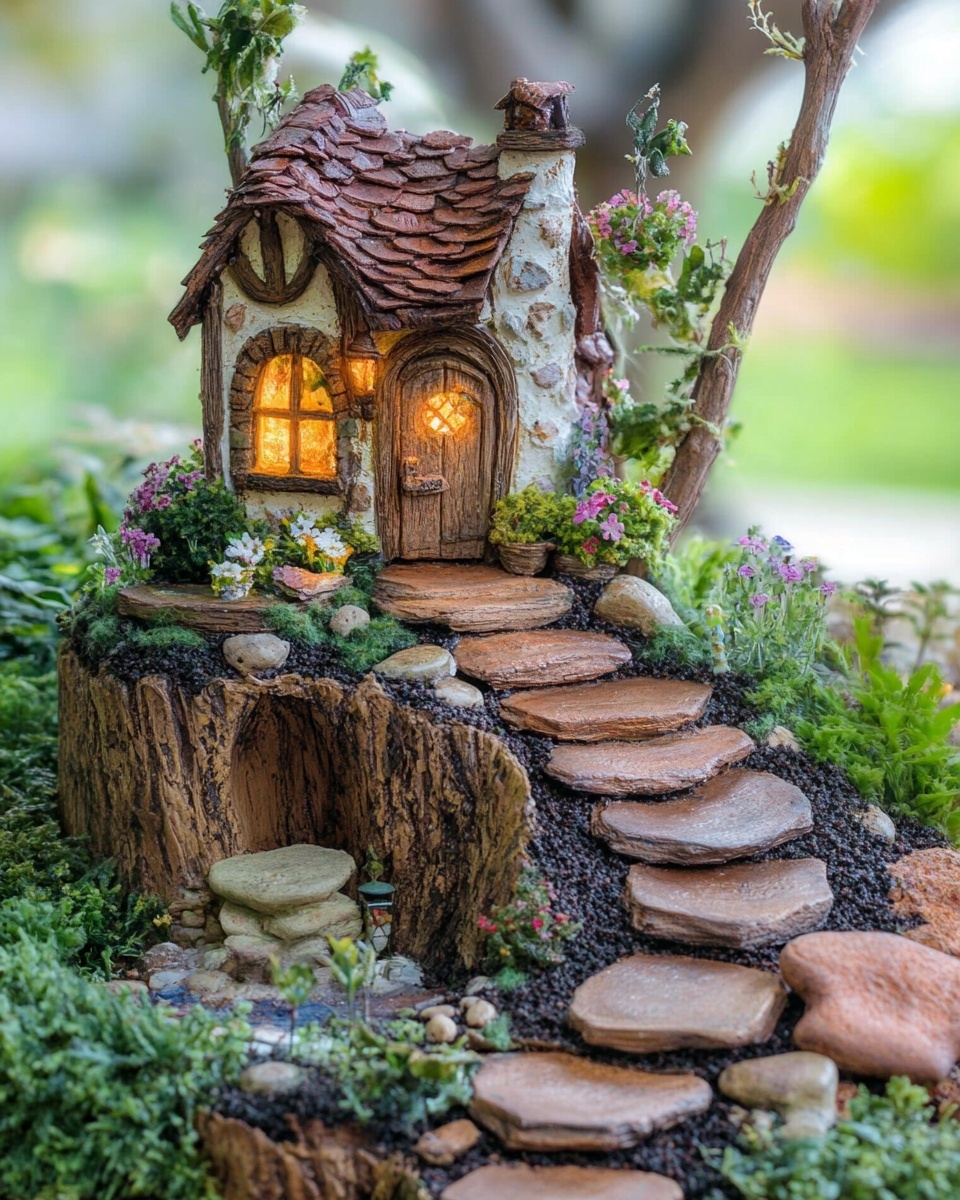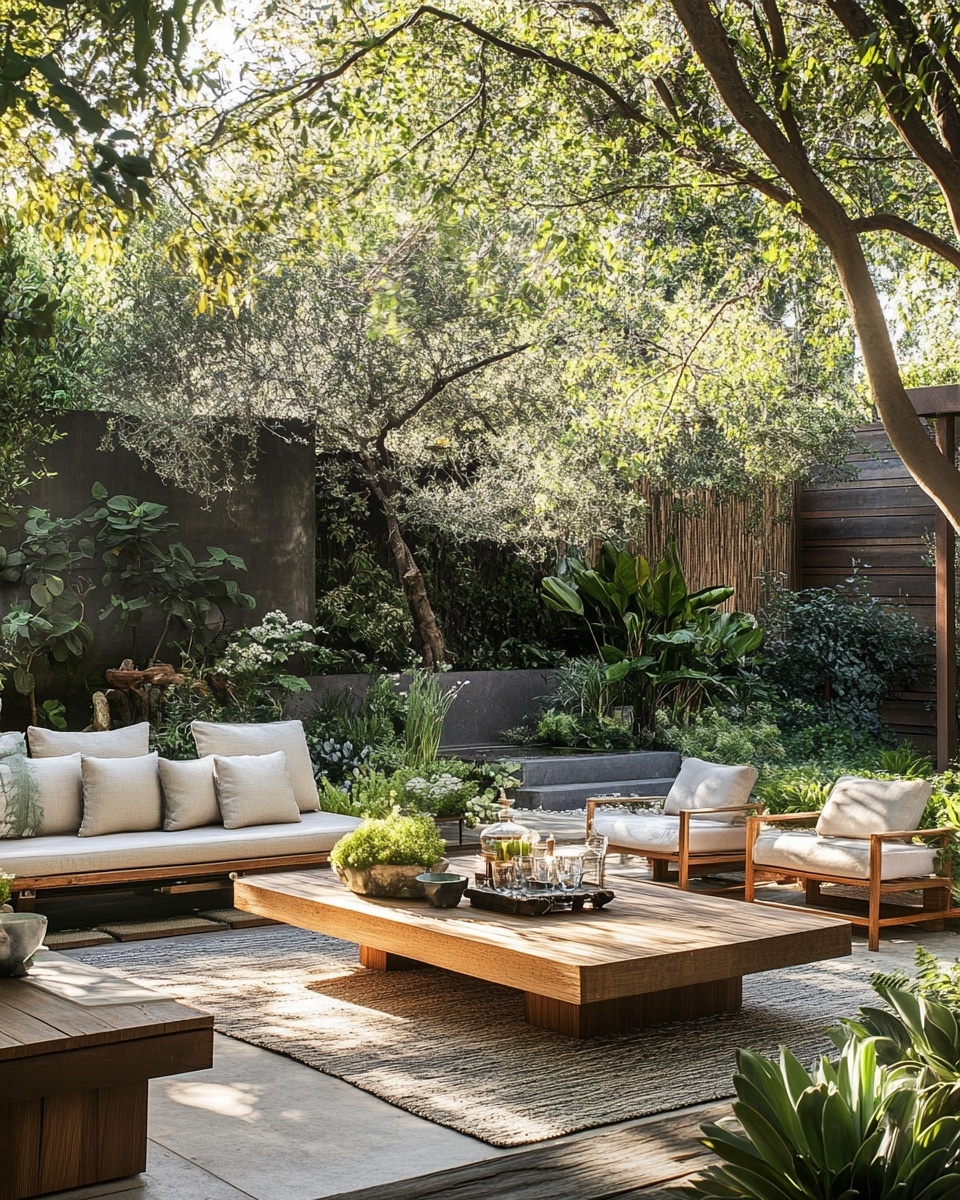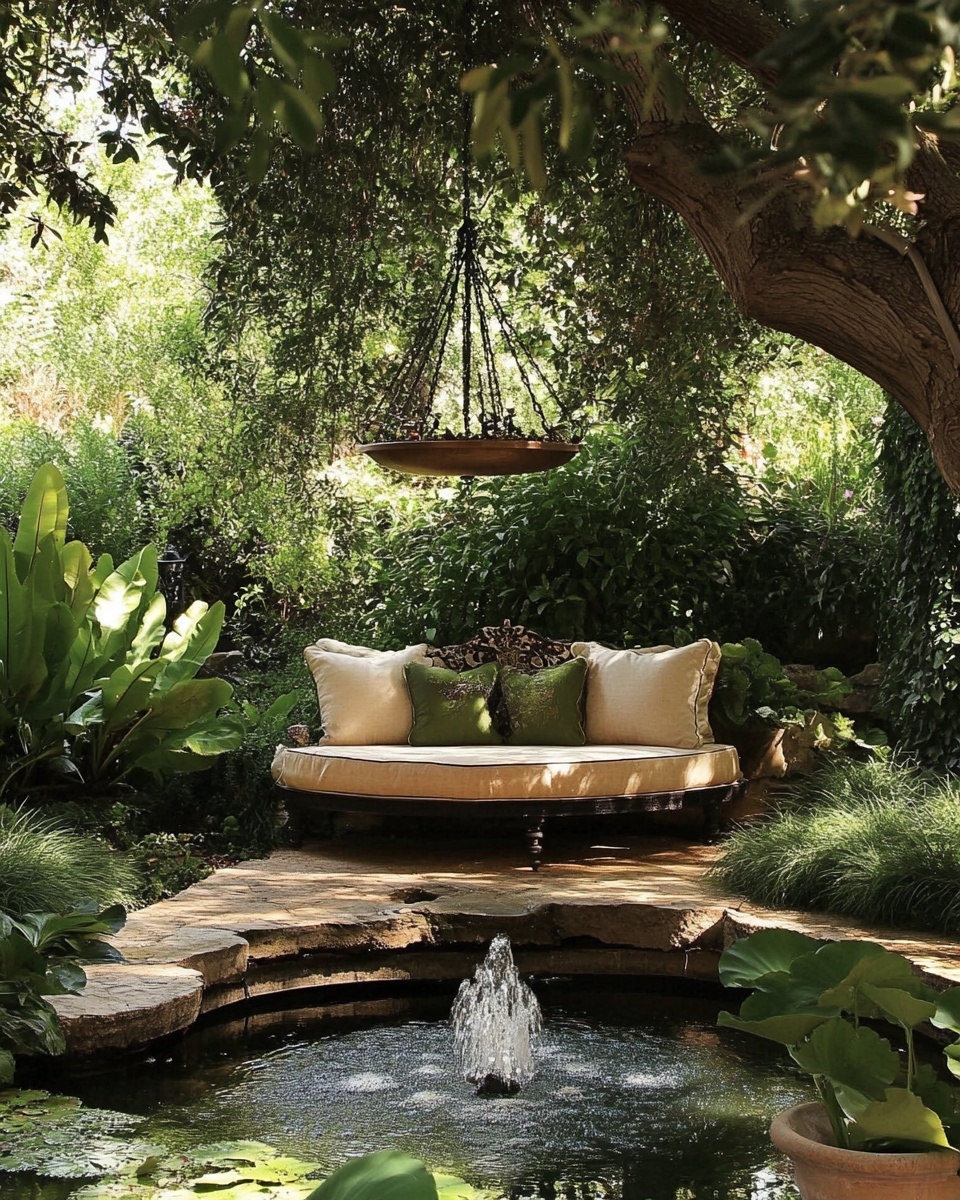Introduction
Ever wondered if you could pluck a ripe, juicy tomato from the vine right in the middle of winter, without stepping foot outside? Perhaps you thought growing tomatoes indoors was an ambitious pipe dream, relegated only to horticultural experts with sophisticated greenhouses. Well, prepare to have your gardening perceptions delightfully challenged! While outdoor gardening is often season-dependent, the beauty of indoor cultivation means fresh produce, like your very own homegrown tomatoes, is accessible year-round. This guide will walk you through everything you need to know about successfully growing tomatoes indoors, transforming your living space into a bountiful, edible landscape.
Tools & Materials Needed
To embark on your indoor tomato adventure, gathering the right supplies is crucial. Think of this as setting up your mini "grow lab."
- Tomato Seeds or Seedlings: Opt for determinate or "bush" varieties, as they are more compact and better suited for container growing. Heirloom seeds offer a wonderful flavor profile, but hybrids might be more disease-resistant for beginners.
- Growing Medium: A high-quality, well-draining potting mix specifically designed for containers is essential. Look for mixes enriched with compost or organic matter. Avoid garden soil, which can compact and harbor pests.
- Containers: Choose pots between 5-10 gallons (about 19-38 liters) with drainage holes, one for each plant. Fabric grow bags are an excellent eco-friendly alternative, promoting air pruning and preventing root circling. For budget-friendly options, repurpose large food-grade buckets (ensure thorough cleaning and drilling of drainage holes).
- Grow Lights: This is arguably the most critical component for successful indoor growing. Full-spectrum LED grow lights are energy-efficient and highly effective. Fluorescent T5 or T8 lights can also work for smaller setups.
- Timer: To ensure consistent light cycles, a simple outlet timer is indispensable.
- Plant Stakes or Cages: Even determinate varieties can benefit from support to prevent breakage from heavy fruit.
- Watering Can or Sprayer: For precise and gentle watering.
- Nutrient Solution/Fertilizer: A balanced liquid fertilizer tailored for fruiting plants is necessary, as potting mix nutrients will deplete over time.
- Small Fan: To improve air circulation and strengthen plant stems, mimicking outdoor breezes.
- Optional but Recommended: A humidity dome for seedlings, soil thermometer, pH meter, and grafting clips for support.
Time & Effort Overview
Growing tomatoes indoors isn't an overnight sprint; it's a rewarding marathon. From seed to first harvest, expect to dedicate anywhere from 60 to 90 days, depending on the variety. Setting up your initial indoor garden will take a concentrated effort of 2-4 hours. Daily maintenance, including watering and checking on your plants, typically requires 10-15 minutes. Weekly tasks like fertilizing and pruning might add another 30 minutes.
Compared to popular leafy greens like lettuce, which can mature in 30 days, tomatoes require a bit more patience. However, they generally grow about 20% faster than perennial fruit trees and offer a more frequent harvest than many root vegetables. This project is firmly in the intermediate difficulty category. While not as complex as hydroponics, it requires attention to detail regarding light, nutrients, and pest management, making it slightly more challenging than simply watering a houseplant. Yet, with the right guidance, it's incredibly achievable for dedicated beginners.
Step-by-Step Gardening Process
1. Seed Starting (or Transplanting Seedlings)
- Prepare Your Seed Trays: Fill seed-starting trays or small pots with a seed-starting mix.
- Sow the Seeds: Plant tomato seeds about 1/4 inch deep. If using seedlings, gently transplant them into larger pots that are at least 5 gallons.
- Maintain Warmth and Humidity: Cover trays with a humidity dome or plastic wrap. Place them on a heat mat set to around 75-80°F (24-27°C) to encourage germination.
- Provide Light Immediately: Once seeds sprout, remove the dome and place them under grow lights set to 16-18 hours a day. Position the light about 2-4 inches above the seedlings, adjusting as they grow to prevent legginess.
2. Transplanting to Permanent Pots
- Timing is Key: Once your seedlings have developed a few sets of true leaves (the second set of leaves after the initial cotyledons), they're ready for their permanent homes.
- Prepare Pots: Fill your 5-10 gallon pots with your chosen potting mix.
- Deep Planting: Gently remove the seedling from its starting container. Bury about two-thirds of the stem when transplanting. Tomatoes are unique in that they can root from their stems, leading to a stronger root system.
- Water Gently: Water thoroughly after transplanting to help settle the soil.
3. Providing Optimal Light
- Grow Light Power: Your grow lights are your indoor sun. For fruiting tomatoes, aim for 12-16 hours of intense light per day.
- Positioning: Keep lights close enough to prevent stretching (legginess) but far enough to avoid scorching. Check your specific grow light’s recommendations. Generally, 6-12 inches (15-30 cm) above the plant canopy is a good starting point for LEDs.
- Consistency: Use a timer to ensure a consistent light schedule.
4. Supporting Your Plants
- Early Staking: As your plants grow, provide support early to prevent potential damage. Insert stakes into the pot or use a tomato cage around the plant.
- Gentle Tying: Use soft plant ties or clips to secure the main stem to the support structure, being careful not to constrict growth. Don’t worry if the plant seems wobbly at first; it will strengthen over time.
5. Pollination for Fruit Set
- The Indoor Challenge: In an outdoor environment, wind and insects naturally pollinate tomato flowers. Indoors, you become the pollinator.
- Manual Pollination: Once flowers appear, gently tap the main stem, shake the plant, or use an electric toothbrush on the flower clusters to vibrate the pollen free. Do this daily during flowering, preferably mid-day when pollen is most viable. Here’s how to fix a fear of doing this wrong: just be gentle; even a light touch helps!
Growth & Care Tips
Growing tomatoes indoors requires consistent attention to their needs.
- Watering Frequency: Tomatoes are thirsty plants. Water deeply when the top inch of soil feels dry to the touch. This might be every 1-3 days, depending on humidity and pot size. Avoid overwatering, which causes root rot in 60% of houseplants, but also prevent the soil from drying out completely. Think consistent moisture, not soggy soil.
- Sunlight Exposure (Grow Lights): As mentioned, 12-16 hours of full-spectrum light daily is critical. Without adequate light, your plants will produce fewer flowers and fruits. Data shows that tomato plants receiving less than 10 hours of light yield significantly less.
- Pruning: For determinate varieties, minimal pruning is needed. Focus on removing any yellowing or diseased leaves. For indeterminate varieties (if you chose one and have the space), ‘suckers’ (shoots that grow in the crotch between the main stem and a leaf branch) should be pinched off when small to redirect energy to fruit production.
- Fertilization: Indoor potting mixes typically lack long-term nutrients. Begin fertilizing once your plants start flowering and setting fruit. Use a balanced liquid fertilizer (e.g., 5-10-5 or 2-3-1 N-P-K) every 1-2 weeks, following package directions. Many expert gardeners recommend a slightly higher potassium blend during fruiting.
- Pest Prevention: Indoor environments can still attract pests. Inspect your plants regularly for signs of aphids, whiteflies, or spider mites. A spray of insecticidal soap or neem oil can effectively manage most indoor pests. Good air circulation from a small fan also helps deter many pests and fungal issues.
Eco-Friendly & Sustainable Alternatives
Make your indoor tomato garden even greener!
- Composting: Start a small indoor worm bin or compost bucket for kitchen scraps. The vermicompost or finished compost can be mixed into your potting soil, enriching it naturally. This reduces waste and enriches your plant's diet.
- Natural Fertilizers: Beyond chemical options, consider organic liquid fish emulsion, seaweed extract, or compost tea for nutrient boosts.
- Water Conservation: Implement a self-watering system using wicks or an olla pot to conserve water and ensure consistent moisture. Collect rainwater if feasible and uncontaminated, or use leftover cooking water (unsalted) once it cools.
- Small Spaces Solutions: If you’re struggling with space, consider vertical grow systems or hanging planters for your tomato plants. Determinant varieties are perfect for smaller setups. For an even more unique approach, explore hydroponic setups which allow plants to grow without soil, directly in nutrient-rich water.
Creative Ideas & Uses
Growing tomatoes indoors isn't just about the harvest; it’s about bringing life and beauty into your home.
- Aesthetic Groupings: Combine your tomato plants with companion herbs like basil or marigolds (which also help deter pests) in attractive containers to create a mini edible landscape.
- Integrated Design: Place your grow light setup in a bright corner, treating it as a functional design element. Modern LED grow lights are often sleek and unobtrusive.
- Repurpose & Reuse: Upcycle old shelving units into tiered grow stations. Use decorative stakes or trellises to add an artistic touch to your plant supports. Check out this Pinterest board for more creative indoor garden inspiration.
- Colorful Varieties: Grow a mix of cherry tomato varieties in different colors – red, yellow, orange, and even black – for a vibrant display and diverse culinary options.
Common Mistakes to Avoid
Even experienced gardeners can stumble. Here are typical pitfalls when growing tomatoes indoors:
- Insufficient Light: This is the number one mistake. Expect leggy, sickly plants and minimal fruit. Solution: Invest in appropriate grow lights and use a timer.
- Overwatering or Underwatering: Both extremes are detrimental. Overwatering suffocates roots; underwatering stresses the plant. Solution: Check the soil moisture daily with your finger, and water only when the top inch is dry.
- Lack of Pollination: Without manual intervention, your flowers won't turn into fruit. Solution: Gently shake or vibrate the plants daily during flowering.
- Using Garden Soil: Garden soil is too dense for containers, lacks proper drainage, and can introduce pests and diseases. Solution: Always use a high-quality, sterile potting mix.
- Ignoring Pests: Indoor gardening doesn’t mean pest-free. Pests can rapidly overtake a confined indoor space. Solution: Regular inspection and immediate intervention with organic pest control.
Maintenance & Storage Tips
- Long-Term Plant Health: After several months of continuous fruiting, your indoor tomato plant might start to decline. While you can try to rejuvenate it with pruning and fresh fertilizer, often it's more efficient to start new plants from seed for continuous production.
- Seed Storage: If you're saving seeds from your heirloom tomatoes, ensure they are thoroughly dried before storing them in a cool, dark, airtight container. Viability diminishes over time, so aim to use them within 2-3 years.
- Solving Issues:
- Yellow Leaves: Could indicate nutrient deficiency (especially nitrogen), overwatering (poor drainage), or inadequate light. Assess your fertilizing, watering, and light schedule.
- Poor Soil Drainage: If water sits on the surface or drains slowly, your potting mix might be too dense or clogged. Repot with fresh, well-draining soil, potentially adding perlite for aeration.
- Blossom Drop: Often caused by extreme temperatures (too hot or too cold), lack of pollination, or nutrient imbalances (especially calcium deficiency). Ensure stable temperatures (65-80°F/18-27°C), consistent pollination, and proper fertilization.
Conclusion
Successfully growing tomatoes indoors is not only possible but incredibly rewarding. Imagine the joy of harvesting your own sweet, sun-ripened tomatoes regardless of the season outside! By carefully selecting your variety, providing ample light and nutrients, and performing a bit of gentle hand-pollination, you can create a thriving indoor edible garden. This guide provides a robust framework, but remember that observation and adaptation are key. Each plant is unique, and learning to read its subtle cues will make you a master indoor gardener. Now, what are you waiting for? Grab those seeds, set up your lights, and embark on your journey to year-round tomato abundance! Share your progress in the comments below – we'd love to see your indoor tomato triumphs.
FAQ
-
What's the best type of tomato for growing indoors?
Determinate or "bush" varieties are highly recommended due to their compact growth habit and predictable fruiting, making them ideal for container growing tomatoes indoors. Cherry and grape tomato varieties are also excellent choices. -
How much light do indoor tomatoes really need?
Tomatoes are sun-loving plants. For successful fruit production when growing tomatoes indoors, they require a minimum of 12-16 hours of intense, full-spectrum grow light daily. Less than this will result in leggy plants and poor yields. -
Do I need a special soil mix to grow tomatoes indoors?
Yes, absolutely. A high-quality, well-draining potting mix specifically formulated for containers is crucial. It provides aeration, holds moisture, and gives your growing tomatoes indoors the right start. Avoid heavy garden soil. -
How often should I water my indoor tomato plants?
Water deeply when the top inch of soil feels dry to the touch. This can vary from every 1-3 days depending on the pot size, temperature, and humidity. It's better to slightly under-water than to over-water. -
My indoor tomato flowers are falling off, but no fruit is forming. What's wrong?
This is a common issue when growing tomatoes indoors and is often due to a lack of pollination. You need to manually pollinate the flowers by gently shaking the plants or vibrating the flower clusters daily. Other causes can include extreme temperatures or nutrient imbalances. -
Can I use a regular window for light instead of a grow light?
While a sunny south-facing window can assist, it's generally insufficient for the intense light requirements of a fruiting tomato plant indoors, especially during shorter winter days. For consistent fruit production, a dedicated full-spectrum grow light is almost always necessary.
You may also enjoy reading:






